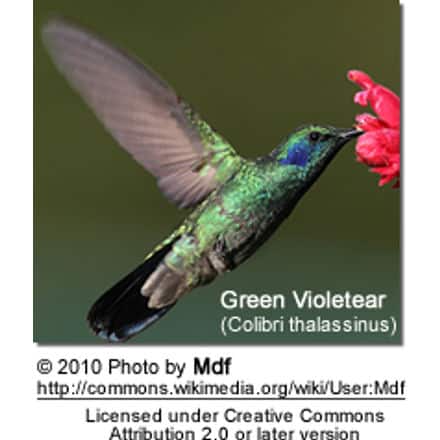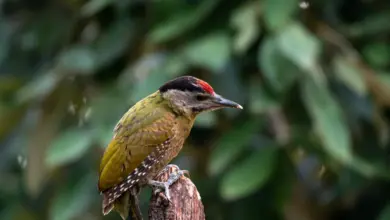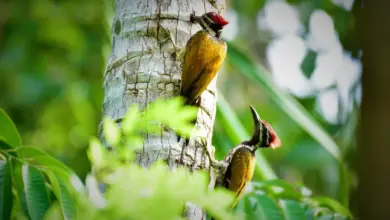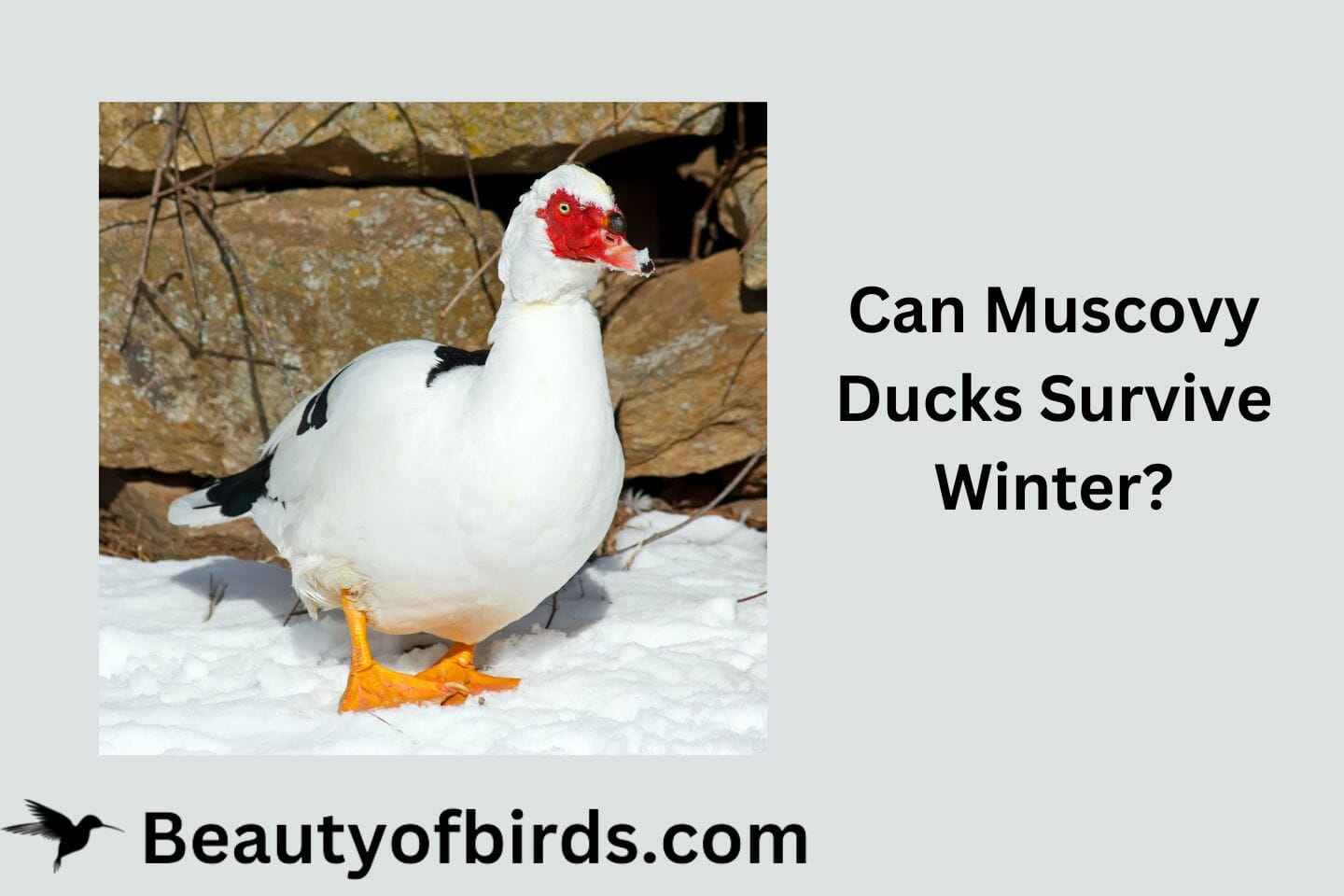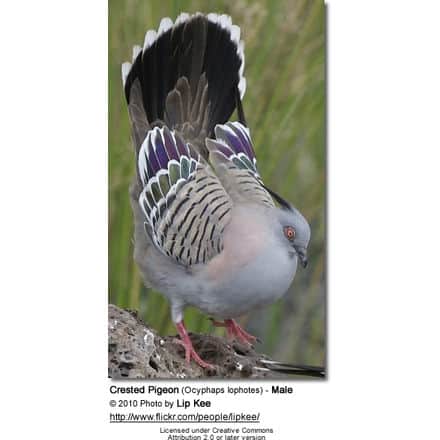Hummingbirds found in New Jersey, USA
In New Jersey, the following hummingbirds are most commonly found …
Ruby-throated Hummingbirds, Archilochus colubris – Native / Common – Usually arrive in mid to late April (especially around April 19 through 23) and early May – with males usually being the first to show up to stake out their feeding territories. Most leave toward the end of September and October. Males usually depart first, and females and juveniles follow about two weeks later.
The male has a ruby-red throat, a white collar, an emerald green back and a forked tail.
The female has a green back and tail feathers that are banded white, black and grey-green.
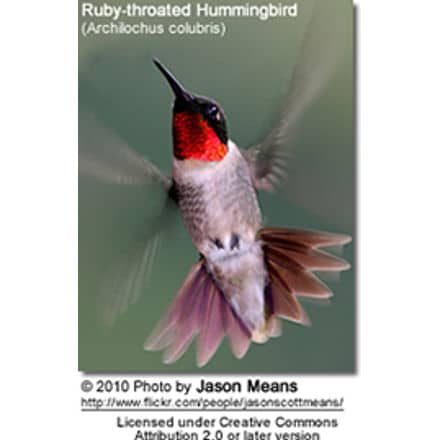
Rufous Hummingbirds Selasphorus rufus — Native / Common … Like the Ruby-throated Hummingbird , they usually arrive in the first week of May (with some arriving as early as mid April). Males are usually the first to show up to stake out their feeding territories. Most leave toward the end of September. Males usually depart first, and females and juveniles follow about two weeks later.
These hummingbirds are usually found in gardens and at feeders. These birds are fearless, and are known for chasing away other hummingbirds and even larger birds, or rodents away from their favorite nectar feeders and flowers.
Males can easily be identified by their glossy orange-red throats.
Females have whitish, speckled throats, green backs and crowns, and rufous, white-tipped tail feathers.
Rufous Hummingbird versus the similar Ruby-throated Hummingbird (Identification)
Black-chinned Hummingbirds, Archilochus alexandri – Rare Visitors
Reported sightings:
- Vernon Township in Sussex County, New Jersey: Oct/Nov 2006Barnegat Light, Ocean County, New Jersey: Nov. 2005Villas / Cape May County: Nov. 96 and Oct. 2001
The male has a black, shimmering throat with a purple edge and pale feathers below that create a collar. However, unless the light is just right, the head looks all black. His back is green and there are some green feathers covering the chest.
The female is pale below (sometimes with a slightly speckled throat) and her back is green.
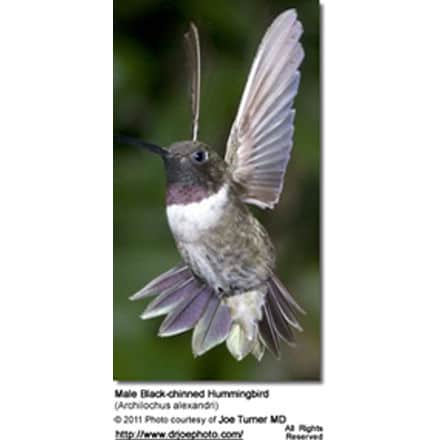
Calliope Hummingbirds, Stellula calliope – Occasional visitor / uncommon with only about 6 reported sightings since 1996 – 4 in Cape May County (11-12/96, 11/2000, 10/04, 10/07); 1 in Linwood, Atlantic County (11/2002); and 1 Denville, Morris County (11/2007). This is smallest of all hummers in this area.
The smallest breeding bird in North America. They are most easily confused with the Rufous Hummingbirds and the Broad-tailed Hummingbird.
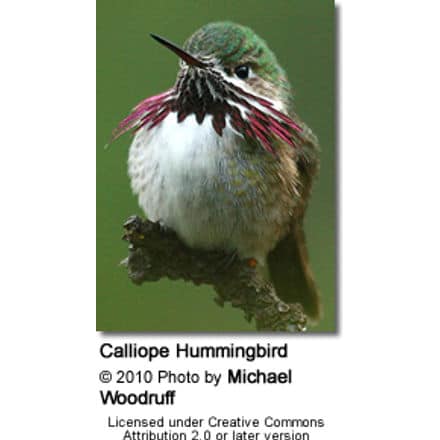
Anna’s Hummingbirds, Calypte anna – Rare / Accidental
One of the larger and the most vocal hummingbirds in the United States, where it is the only species to produce a song; specifically the males produce a complex series of scratchy noises, sounding like a sharp “chee-chee-chee; when moving from flower to flower, they emit toneless “chip” vocalizations. All other hummingbirds in the United States are mostly silent.
They are well known for their territorial behavior; the male makes elaborate dive displays at other birds and sometimes even at people. At the bottom of their dives, they produce high-pitched loud popping sounds with their tail feathers.
Males have glossy dark rose-red throats and crowns, which may appear black or dark purple in low light. The underside is mostly greyish; and the back metallic green.
Females have light grey chests with white and red spotting on the throat, greenish back and white tipped tails.
They resemble the Costa’s Hummingbirds, but the male’s Costa’s Hummingbird‘s gorget (throat feathers) is longer than that of the Anna’s. They are larger than the Rufous Hummingbirds and lack the rusty coloration of the Rufous Hummingbirds.

Allen’s Hummingbirds, Selasphorus sasin – Rare visitors – Historically, these birds nested in coastal California and wintered in Mexico; but more and more of them are remaining in California year-round or are traveling to the eastern United States for the winter.
Sightings occurred:
- Cape May County: Nov. 2000 – Jan. 2001; and Nov. 03 – Jan. 2004
- Villas / Cape May County: Nov. – Dec. 2004
The Allen’s Hummingbird is often confused with the Rufous Hummingbird, but the Allen’s can be identified by the green back whereas the Rufous Hummingbird has a coppery back.
The male has a throat that ranges in color from orange-red to yellow-orange, a back that is bright green, a rump that is rufous and its tail feathers are rufous tipped in black.
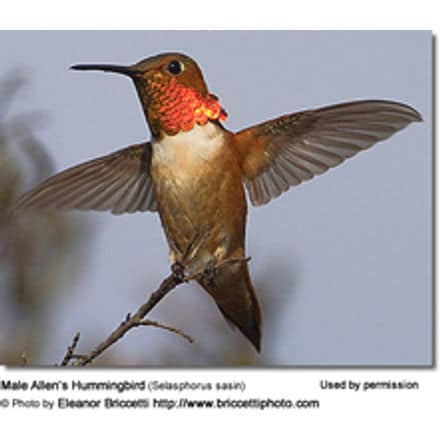
Green Violetear Hummingbirds (Colibri thalassinus) – Rare / Accidental – Only one bird reported, between 23 – 24 August 2005 – sighting occurred on Locust Point Road, Rumson, NJ. They are mostly resident in Mexico and Central America, but some seasonal movements have been observed. They may wander north to the United States and even as far north as Canada..
Males and females resemble each other; except females are usually somewhat smaller and have plumage that is a little duller than the males.
The plumage is mostly grass green turning into a bronze color on the rump and uppertail feathers.
There is a wide violet central spot on the upper chest and a violet-blue band along the chin that may connect to the violet-blue “ear”. The tail is square and slightly notched; and there is a broad dark blue band at the end of the tail.
Confusion: Hummingbird or Insect?
Particularly the smaller hummingbird species are easily confused with insects – specifically with bees, or the hawk, clearwing or sphinx moths. Adding to the confusion is the fact that these insects are often found in the hummers’ territory and have similar flying and feeding patterns.
Moths have a couple of sensors or “antennas” on top of the head. Provided you can get close enough to see them, this would be a good way of differentiating them from the hummers. They may also have some yellow at the backend.
Hummingbirds in Other Places
- Hummingbirds found in the USA (by U.S. State)
- Canada
- Puerto Rico
- Jamaica
- Honduras
Hummingbird Resources
- Hummingbird Information
- Hummingbird Amazing Facts
- Attracting Hummingbirds to Your Garden
- Hummingbird Species
- Feeding Hummingbirds

